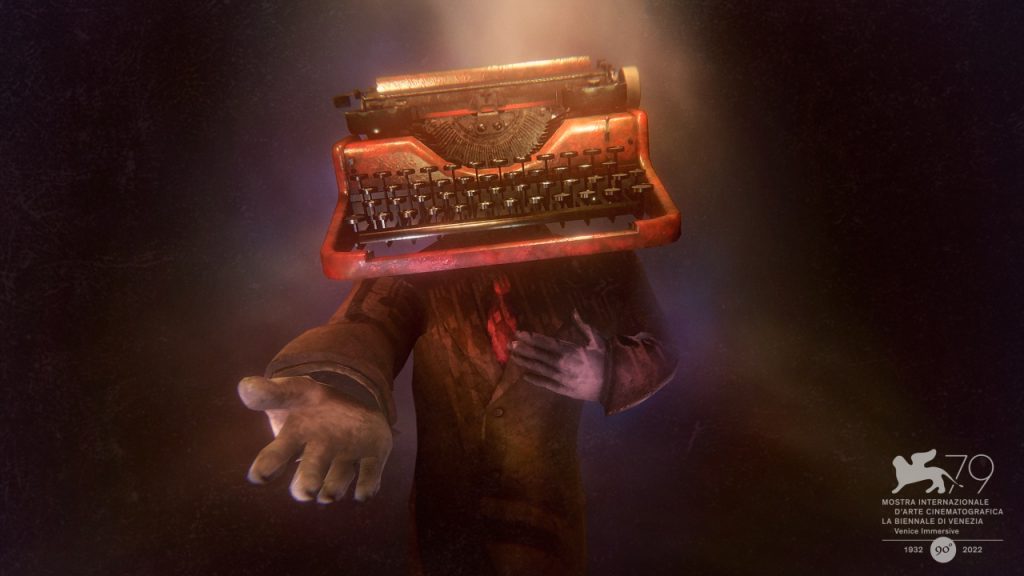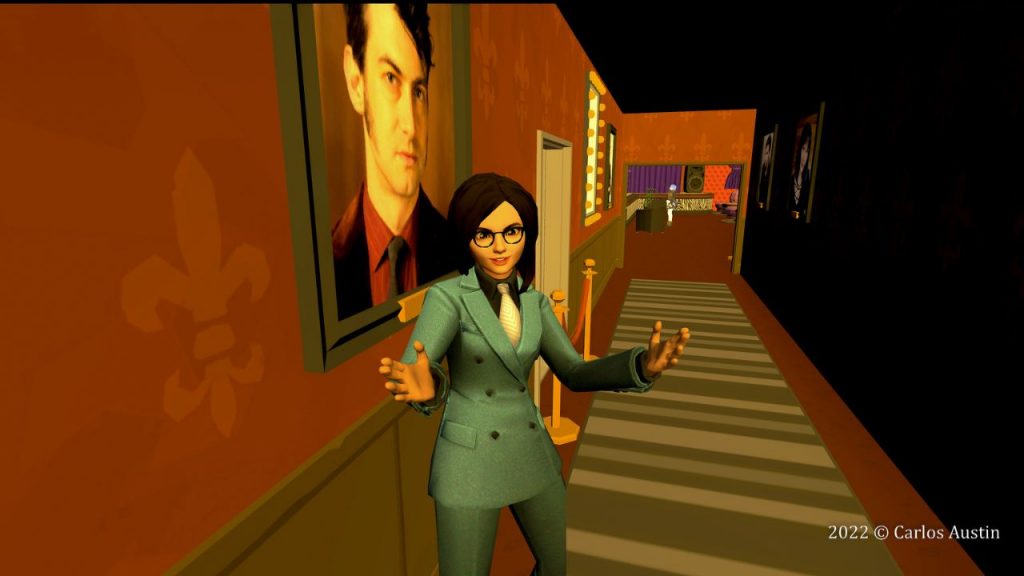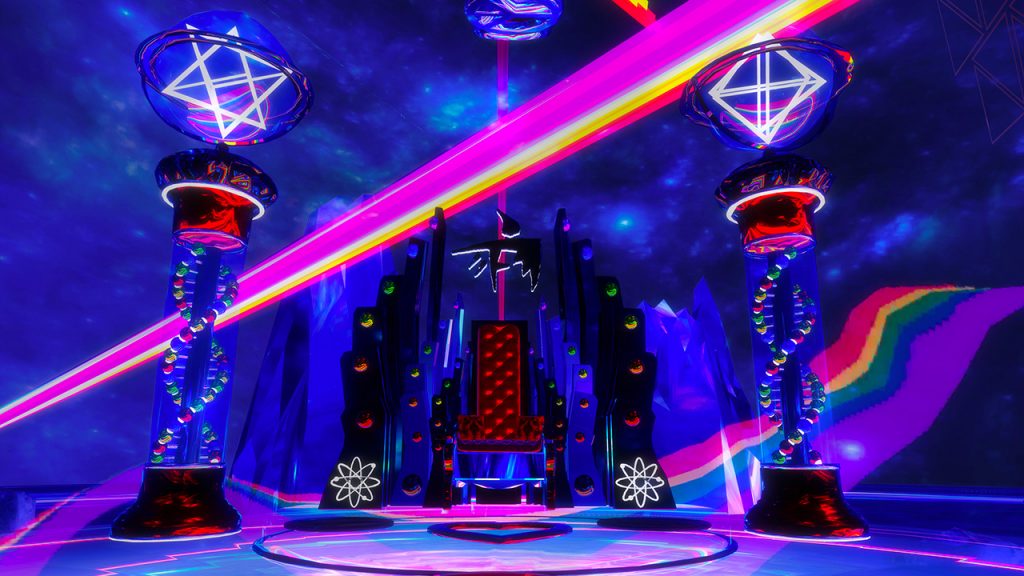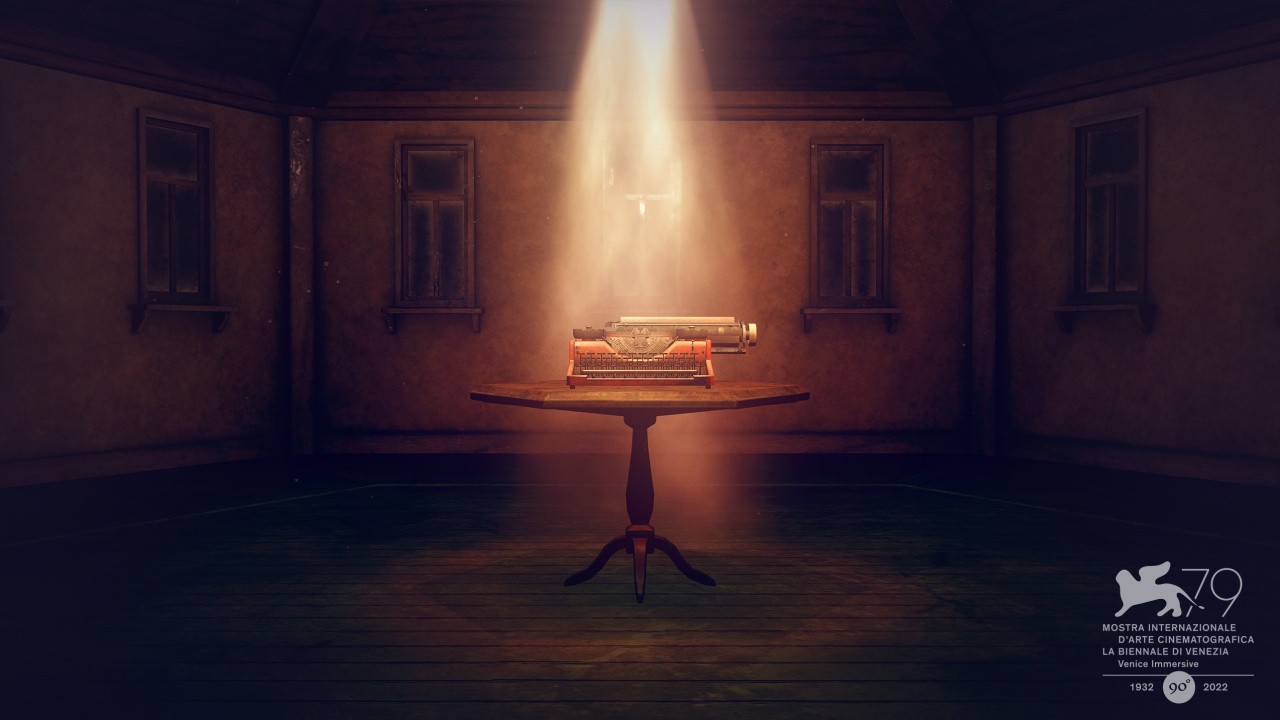The seventh edition of the annual Raindance Immersive was held during 26 October – 26 November 2022, “celebrating independent XR creators, game developers, virtual world builders and performers with the festival’s Raindance Immersive Awards”.
The aim of the festival is to celebrate and award recognition to individuals and companies who contribute to innovation within the fields of immersive storytelling, game design and virtual world building over the last year. In this article I will report on four narrative based Virtual Reality experiences that were performed live during the festival, in order to highlight any emerging trends within this new genre of performance.
TYPEMAN, A polished production that lifts the heart
TYPEMAN, directed by Keisuke Itoh, was an uplifting experience that seemed to focus on our human need for connection. Actors Yamato, Yoikami and Tarako used non-verbal cues, bodily movement and gestures to bring an isolated humanoid character to life. This being, sporting an old typewriter for a head, encouraged the participants to communicate with him/her through mimicry and hovering typewriter keys. By working together, participants had to unscramble anagrams and physically type out words by pressing down on these virtual keys. This provided simple, fun moments of interaction between the players (who may be strangers to each other) and was met with joyful non-verbal praise when a word was completed.

Music and lighting were used effectively to create a sense of nostalgia, emotive warmth, brief moments of desolation and, at the end of the piece, an energetic climatic ending where the VR participants and performer danced together.
The narrative was simple, the focus seemed to be on the creation of atmosphere and enabling communication. At times I was unsure about the more subtle intentions behind movements. There was also a moment in the show where myself and the other participants guessed the answer wrong, deciding on the word “sign” when “sing” was the correct answer. I found that humorous. Overall, the feeling of connection, joyfull collaboration and the atmosphere created by music and dance were wonderful. A polished production that lifts the heart and leaves a smile on your face when you take off the headset.
“On the value of connection, between the spiritual and physical worlds” – Keisuke Itoh (TYPEMAN)
OFF-RAIL, demonstrating the threat of AI in virtual worlds
OFF-RAIL, directed by Ari Tarr and David Gochfeld is a parody of a western-themed VR/AI theme park of the future where “nothing can go wrong”. This show has the potential to become a lovely WestWorld-like mimic where participants are unsure whether the characters they are interacting with are “real”, in the sense that they are performed by actors in real time, or whether those characters are controlled by Artifcial Intelligence. This seemed to be the theme of the project.

Upon entering the show, audience members were greeted by actors who warmed up the crowd via banter and an improvisational exercise. The performers were quickly interrupted by apparent AI imposters of these actors (presumably embodied by other actors) who were out to demonstrate the threat of AI’s potential for making performers obsolete. The audience was then transported to a small Western town where participants were split into two parties, one group labelled as bad and the other as good, headed by a live player each. For the remainder of the show, players were encouraged to search for precious stones, with the team gathering the most crowned the winner. Players occasionally interacted with town inhabitants whose existence was intentionally dubious: at times I was unsure if the character was embodied by an actor or whether pre-recorded audio was attached to an avatar.
The experience felt a bit rushed for me, and the overall narrative wasn’t cohesive. It was fun exploring the world and I appreciated the player agency.The show has great potential.
“We need to offer artists a place to express themselves” – Ari Tarr (OFF-RAIL / SEIKUKEN)
A nod to the absurd in SKITS & GIGGLES
SKITS & GIGGLES, directed by Kiira Benzing (FINDING PANDORA X), made use of a Vaudevillescue blend of entertainment forms to usher the VR audience across several locations where live performers aimed to delight the virtual-cocktail-drinking crowd. The aesthetic was colourful, at times giddy, playful and flamboyant. The VR participants were offered a kaleidoscope of short skits in wacky locations: a game show TV set and weather station, the inside of a fridge, speaking appliances set in a 1950s home and a traditional red-curtained dance hall.
It was a very social experience, encouraging interaction and socialisation between the performers and the audience, and amongst fellow participants. The audience was guided in shouting verbal responses to the entertainers on stage and near the end of the performance there was synchronised dancing with all involved. As the title implies, the narrative consisted of sketches and musical numbers. The show attempted to transfer the atmosphere of IRL live variety show/musical theatre energy into VR and partly succeeded. I found the humour a bit US-specific, as non-US based audience members (where variety shows and musical theatre isn’t that popular), some of the jokes were lost on me.
Two scenes in the show stood out for me. Firstly, a pregnant 1950s character lamented about her turbulent relationship with her boyfriend, who happened to be a kitchen appliance, a toaster. I quite liked this nod to the absurd. Second, at one point in the show we found ourselves locked in a fridge, with participants roughly the size of the eggs in a carton next to them on the shelf. This use of scale was a welcome change and quite interesting shift in perspective. Skits & Giggles is a fun, light-hearted experience, best enjoyed with a group of friends logging in together and “making a night of it”.
GUMBALL DREAMS: a real sense of personal connection
GUMBALL DREAMS, produced by Deirdre V. Lyons (WELCOME TO RESPITE, THE UNDER PRESENTS…) and Christopher Lane Davis, was an incredibly moving experience, combining great interaction with bubblegum pop aesthetics that takes three participants on an emotive, psychedelic journey of self-discovery.

Myself and two other players were tasked with assisting a deity on its quest to transition towards a different, higher realm. A pair of players set off to complete elegantly designed puzzles while the other player remained with the deity. It is this aspect of the show that enthralled me most: you are offered the opportunity to have a very earnest conversation with this creature, performed by different members of the cast each night. I felt that a real sense of personal connection was created between the performer and the player.
Even though the subject matter was heavy (death/ transitioning/reincarnation) the narrative still felt life-affirming and well written. The fact that each player was afforded such intimate, personal attention and probed for an individual perspective, created a strong sense of agency.
The trippy, psychedelic visual and auditory crescendo at the end successfully exploited one of the strongest aspects of VR: its ability to immerse and transport the viewer to a different world. That same moment also created slight motion sickness for me, but the sensation passed quickly. It is quite impressive that the whole show is manned by one single performer. For those of you who are pretty bad at puzzles (like me) but yearn for agency in VR, this type of sincerity in performance provides the interaction and sense of embodiment you are looking for. A true gem of a show that should not be missed. Gumball Dreams won this year’s Best Immersive Performance Award.
Raindance Immersive, where immersive pioneers are
Immersion, interactivity and agency is a triad of considerations that need to maintain a careful balance. It is clear that all the productions above are attempting to be innovative, experimenting with the technology and adapting existing notions of performance to fit a new medium of storytelling. Currently, there is a general tendency amongst narrative VR experiences to attempt to create audience engagement through tasks or quests, stemming from a possible need to “keep the audience busy”. In my opinion, engagement with characters and plot doesn’t necessarily need to include gamification. Agency is important in VR theatre but I think that it can be achieved in multiple ways. It is ok to let your audience experience moments of stillness, where no action takes place, perhaps not even dialogue. If you can get your audience to care about your characters, then they will be eager to engage with the plot. If the plot is driven by a good underlying story, if that narrative foundation is solid and clear to the audience, then VR creators can get away with much less talking, explaining and coaxing.
It is easy to criticise, of course. There are many who talk, and far fewer who build. Most of these productions took months, even years to come to fruition. With each year’s offering at Raindance Immersive, new productions emerge that are built on the shoulders of pioneers, exposing larger audiences to an emerging genre of performance. XR festivals are doing a much needed service to the community by educating and growing an audience for this type of live entertainment. Real-time synchronous immersive experience VR performances are heading in a very exciting direction. Bravo! all round. We cannot wait for next year.



Leave a Reply
You must be logged in to post a comment.